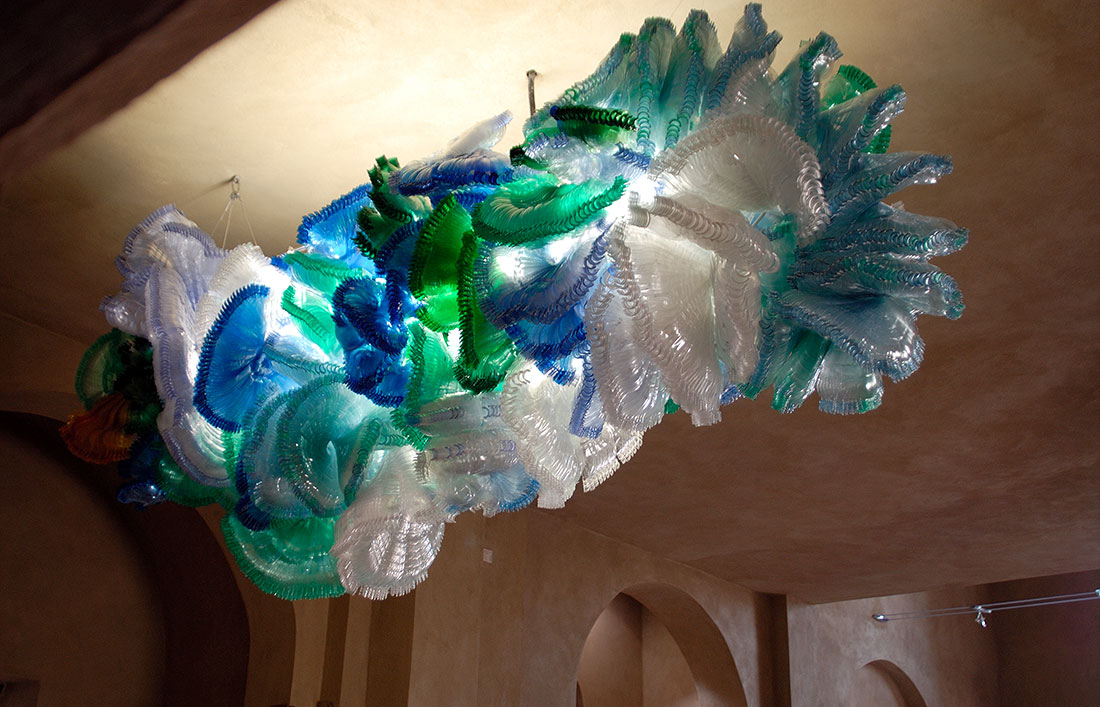

The large-scale installation is situated in the space once occupied by the altarpiece of a deconsecrated church in a small umbrian village. The work belongs to the cycle created in homage to Roberto Capucci, an emblematic figure of formal and material experimentation at the intersection of art, fashion, and the architecture of the body. Following a prolonged process of collecting plastic bottles, constituting the primary material of the work, these objects are transformed from elements of consumption and waste into symbolic and spiritual matter. Through techniques of cutting, assembling, and modulating transparency, plastic is sublimated into a luminous and iridescent texture that conveys a sense of suspension and silent hieratic presence. In this perspective, the work stands as a reflection on the regenerative power of art, on the possibility of restoring dignity and meaning to residual materials, and on the continuity between the artistic gesture and the ritual act. The installation thus becomes a meditation on transformation, on the emergence of beauty and spirituality from discarded materials, and on the artistic act as a gesture of emancipation.
L’intervento installativo, di ampie dimensioni, si colloca nello spazio già destinato alla pala d’altare di un’antica chiesa sconsacrata, situata in un piccolo borgo umbro. L’opera appartiene al ciclo dei lavori realizzati in omaggio a Roberto Capucci, figura emblematica della ricerca formale e materica nel rapporto tra arte, moda e architettura del corpo. Dopo una prolungata raccolta le bottiglie in plastica, che sono di fatto il materiale costitutivo dell’opera, si traducono da elemento di consumo e scarto in materia simbolica e spirituale. Attraverso processi di taglio, assemblaggio e modulazione della trasparenza, la plastica viene sublimata in una tessitura luminosa e cangiante, in grado di restituire un senso di sospensione e silenziosa ieraticità. In tale prospettiva, l’opera si pone come riflessione sul valore rigenerativo dell’arte, sulla possibilità di conferire nuova dignità e senso a materiali residuali e sulla continuità fra gesto artistico e gesto rituale. L’opera diventa così una meditazione sulla trasformazione, sulla possibilità di bellezza e spiritualità anche nei materiali di scarto, e sull’atto artistico come gesto di emancipazione.